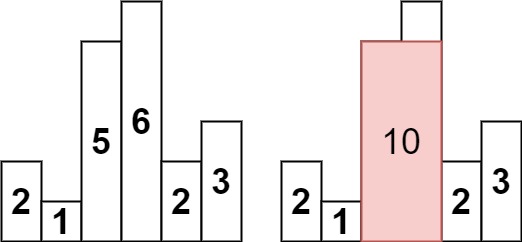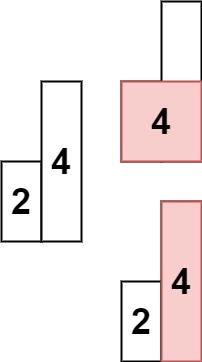Largest Rectangle in Histogram
Given an array of integers heights representing the histogram's bar height where the width of each bar is 1, return the area of the largest rectangle in the histogram.
Example 1:

Input: heights = [2,1,5,6,2,3]
Output: 10
Explanation: The above is a histogram where width of each bar is 1.
The largest rectangle is shown in the red area, which has an area = 10 units.
Example 2:

Input: heights = [2,4]
Output: 4
🧠 Logic:
-
For each bar at index
i, find:-
left[i]→ Index of previous smaller element on the left. -
right[i]→ Index of next smaller element on the right.
-
-
For each bar:
-
Width =
right[i] - left[i] - 1 -
Area =
heights[i] * width
-
-
Return the maximum area.
🔍 Example Dry Run: heights = [2, 1, 5, 6, 2, 3]
-
Right smaller (traversing left to right):
-
Right: [1, 6, 4, 4, 6, 6]
-
-
Left smaller (traversing right to left):
-
Left: [-1, -1, 1, 2, 1, 4]
-
Then use width: right[i] - left[i] - 1 for area.
Comments
Post a Comment